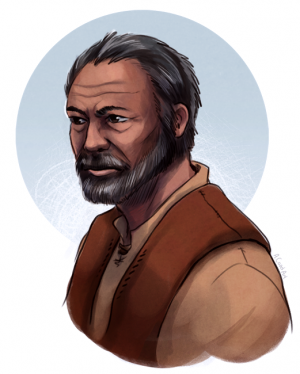Was watching Rick and Morty on the Season 3 premiere and they have that very small planet that the family goes to to escape. The planet is humorously small in that it is noticeable round while walking. The planet also apparently has animals and breathable air for humans. At one point, Rick goes to the South Pole of the planet and goes into a cave that takes him to the core of the planet which is shown as being smaller than him, from what I remember and what it looked like.
Could a planet like this actually exist with all of these features, only being a few acres in size, at most? Would a breathable atmosphere be possible? Would a core be present at all?
To put it in more realistic terms, the planet would be the size of Manhattan Island in New York City but folded to be round.
Accepting the surface gravity limit of 1.25 to 1.5 g and the minimum escape velocity of 6.25 kilometers per second from Habitable planets for Man Stephen H. Dole, 1964,
https://www.rand.org/content/dam/rand/pubs/commercial_books/2007/RAND_CB179-1.pdf
Let’s use these calculators to find these variables
https://philip-p-ide.uk/doku.php/blog/articles/software/surface_gravity_calc
https://www.omnicalculator.com/physics/escape-velocity
I’m using 22km for the length of Manhattan which gives us a planetary radius of ~3.5km
3.5km makes it impossible to have both an acceptable surface gravity and escape velocity for an atmosphere. I was looking at a 3e-7 earth mass which provides the correct gravity but it’s too low of an escape velocity. Raising the mass increases the gravity very quickly. Even so a 3e-7 earth mass is a density of 10e7 kg/m^3 which is in the red dwarf density. I am not skilled enough in astrophysics to be certain but it seems to object would undergo some sort gravitational collapse
Disclaimer: I quit astrophysics a long time back when I moved into mathematical physics (which I only recently quit)
If it’s in red dwarf territory then I think it’s too light to be stable and would just explode rather than collapse because that mass is far too small and the electrostatic force too strong compared to gravity. Don’t take this as fact because I’m just estimating based on my intuition about the relative strengths of those forces, though I am reasonably confident.
This does bring up the fact that white dwarves will eventually (trillions of years iirc) cool down and basically be big inert lumps of dead star. Thinking about the cold iron cores of stars was what eventually led to the discovery of things like neutron stars and black holes.
Very dense stuff in the core ➡️ more gravity
Someone needs to do the math, using the densest material, how much it would take to have enough gravity to keep things on the surface from flying off easily.
My guess is, it can’t be cartoonishly small like the Rick & Morty planet, but it probably can be significantly smaller than the moon.
Black hole. It can be absolutely miniscule.
I’m no astronomer but I’m pretty sure you can’t walk on a black hole. And if you just place a black hole in the center of a hollow planet, it would necessarily create a cavity in the center so I don’t think it would be stable.
Whatever the answer is, it must be stable and walkable.
Depends on the size of the black hole actually, you can make reasonably heavy black holes that are so small that it might actually not be possible for particles to fall into them.
You have to make them with some extremely well tuned lasers, and they’ll produce enormous amounts of radiation that will likely steralise the planet anyway, but possibly feasible…
Clearly not as the surface.
Black holes exist without us falling in.
Besides, nobody ever claimed that the planet’s core needed to be stable.
The surface needs to be stable, but it wouldn’t be (I think) if the center is hollow. There’s no force to keep the black hole centered within the cavity, meaning it inevitably gets close enough to the walls to suck in more material, thus the whole planet collapses into the black hole.
Well the Earth is hollow, so I don’t see the problem.
Neutron star, not black hole.
Neutron star degenerate matter will expand if you don’t have all the usual surrounding matter making it into degenerate matter. Neither a black hole nor a neutron star will work for this.
If you put a black hole in the middle and prevent it from swallowing your planet, it might work.
So, not possible then?
Lets say you had a sphere of bismuth (densest non radioactive element) with the mass of the moon. It would have a radius of 755 miles. To have a mass similar to earth it would need to be much larger. Curvature would be relatively noticable on the horizon.An osmium sphere with the mass of the moon would have radius of 571 miles
Bismuth is heaviest by atomic mass, but not by density (10 g/cm3). Osmium and Iridium compete for that title (22.6 g/cm3).

